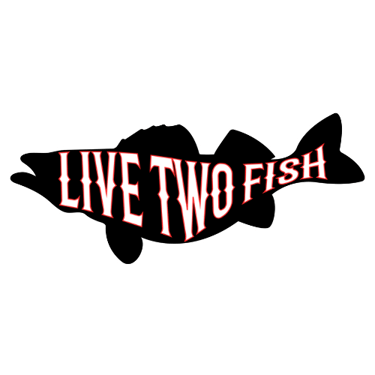What Water Temperature Tells You About Fish Activity
Unlocking the Secret Code Behind Fish Behavior, Feeding, and Lure Selection If you’re not paying attention to water temperature, you’re missing one of the most powerful tools in your fishing arsenal. Whether you're chasing bass, walleye, or panfish, understanding how water temp affects fish behavior can turn an average trip into an epic one. At Live Two Fish, we know our lures perform best when paired with knowledge. So let’s break down exactly what water temperature tells you about fish activity—and how to adjust your tactics accordingly. 🌡️ Why Water Temperature Matters Fish are cold-blooded, meaning their metabolism, digestion, and activity levels are directly influenced by the temperature of the water around them. A few degrees can make the difference between a sluggish bite and an aggressive feeding frenzy. 🎣 Bass Behavior by Water Temperature 🧊 35°–45°F – Winter Chill Fish are sluggish, holding in deep, stable water. Feeding is minimal, and bites are light. Best lures: Small soft plastics (like Midwest Minnows on a Ned Rig), jigging spoons, and blade baits. Tactic: Slow everything down. Dead-stick or drag along the bottom. 🌱 46°–55°F – Pre-Spawn Wake-Up Bass start staging near spawning areas. Activity increases as days get longer and warmer. Best lures: Flat tail worms (like our Rodeo Rave) on a Texas rig, jerkbaits, jigs. Tactic: Focus on secondary points and mid-depth structure. 🥚 56°–70°F – Spawn to Post-Spawn This is prime time. Bass move shallow to spawn, then feed heavily post-spawn. Aggression levels spike—perfect for soft plastics and reaction baits. Best lures: Shiner Sticks, creature baits, and swimbaits like Midwest Minnows. Tactic: Fish shallow cover, flats, and laydowns. Mix slow presentations with sudden pops. ☀️ 71°–80°F – Summer Feeders Metabolism peaks—bass are actively feeding but often move deeper midday. Best lures: Worms, craws, and paddle tails with some flash. Tactic: Hit docks, shade lines, deep weed edges, and ledges. Early morning = topwater opportunity. 🔥 81°F+ – Dog Days of Summer Bass seek cooler water and oxygen-rich zones. They may feed in short windows (sunrise, dusk). Best lures: Slow-rolled plastics, Carolina rigs, drop shots with Midwest Minnows. Tactic: Focus on deep structure or current. Fish slow and be patient. 🐟 Other Species: Quick Notes Walleye: Prefer cooler temps (50°–65°F). Become more active in spring and fall. Jigging minnows or worm harnesses excel. Panfish (Bluegill/Crappie): Active from 60°–75°F. Use small soft plastics, especially under floats or slow retrieves. Pike: Like it cold—45°–60°F is ideal. Swimbaits, spoons, and larger plastics work best. 🧠 Pro Tip: Use a Thermometer or Fish Finder Don’t guess—check your fish finder or carry a water thermometer. Know the surface temp and subsurface temp if you’re fishing deeper lakes. A few degrees difference can tell you: Where fish are holding When they’re most likely to bite What speed and presentation you should use 🎯 Final Word: Fish the Temps, Not Just the Calendar Water temperature is the roadmap to fish behavior. Pay attention to it, and you’ll know where to cast, what to use, and how to work your bait. It’s the edge that separates luck from strategy. At Live Two Fish, our lures are designed to trigger bites year-round—but pairing them with water temp insights takes your game to the next level. 🛒 Gear Up for Any Season Ready to match your bait to the bite? 👉 Explore Our Full Line of Soft Plastics and Jig Heads
FISHINGCATCH MORE FISH
Jim Haeck
5/9/20251 min read
My post content
